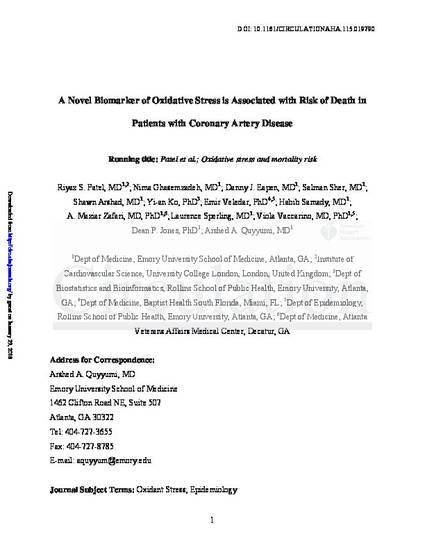
Background—Free radical scavengers have failed to improve patient outcomes promoting the concept that clinically important oxidative stress (OS) may be mediated by alternative mechanisms. We sought to examine the association of emerging aminothiol markers of non-free radical mediated oxidative stress with clinical outcomes.
Methods and Results—Plasma levels of reduced (cysteine and glutathione) and oxidized (cystine and glutathione disulphide) aminothiols were quantified by high performance liquid chromatography in 1411 patients undergoing coronary angiography (mean age 63 years, male 66%). All patients were followed for a mean of 4.7±2.1 years for the primary outcome of all-cause death (n=247). Levels of cystine (oxidized) and glutathione (reduced) were associated with risk of death (p<0.001 both) before and after adjustment for covariates. High cystine and low glutathione levels (>+1 SD & <-1 SD respectively) were associated with higher mortality (adjusted HR 1.63 (95% CI 1.19-2.21; HR 2.19 (95% CI 1.50-3.19), respectively) compared to those outside these thresholds. Furthermore, the ratio of cystine/glutathione was also significantly associated with mortality (adjusted HR 1.92 (95% CI 1.39-2.64) and was independent of and additive to hs-CRP level. Similar associations were found for other outcomes of cardiovascular death and combined death and myocardial infarction.
Conclusions—A high burden of OS, quantified by the plasma aminothiols, cystine, glutathione and their ratio is associated with mortality in patients with CAD, a finding that is independent of and additive to the inflammatory burden. Importantly, this data supports the emerging role of non-free radical biology in driving clinically important oxidative stress.
Available at: http://works.bepress.com/emir-veledar/34/

Originally published in Circulation.